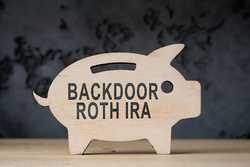Best Custodial Accounts for Minors in 2025


Our evaluations and opinions are not influenced by our advertising relationships, but we may earn a commission from our partners’ links. This content is created by TIME Stamped, under TIME’s direction and produced in accordance with TIME’s editorial guidelines and overseen by TIME’s editorial staff. Learn more about it.
Custodial accounts are tax-advantaged plans parents can use to save for their children’s future–to cover expenses like college education, starting a business, or buying a home. Most custodial accounts are UTMA & UGMA accounts—short for Uniform Transfers to Minors Act and Uniform Gifts to Minors Act. You can think of an UTMA or UGMA as a brokerage account for your child. These accounts let you save and invest for a minor, whether the money comes from an inheritance, gifts, share transfers, or earnings.
The best custodial accounts offer low fees, ample research resources, strong customer support, and a range of investment options. Here are our top picks for 2024.


Acorn's custodial account is available through its Premium service tier, which costs $9 per month—and you can create an account for each child in your life at no extra cost. All Acorns Early customers are placed into Acorns’ Aggressive Portfolio, and you can set up Smart Deposit to automatically invest a piece of your paycheck.

M1's Model Portfolios address various investing goals, such as dividend and income returns, target retirement dates, and socially responsible investments. M1's algorithm keeps your portfolio balanced according to your allocated percentages. When you elect auto-invest, M1 automatically invests funds toward underweight areas, making M1 an excellent option for hands-off investors.

Fabric makes it easy to plan for a child's future in one place by offering custodial accounts, term life insurance to help protect your family's finances, and a free, online will maker to legally document your wishes and name guardians for your children. Custodial account portfolios are managed by an SEC-registered partner with more than 30 years of experience and $70+ billion under management, making Fabric a great option for busy parents.

Vanguard is well known for its low-cost funds, and you'll have access to a broad lineup of investments, including Vanguard mutual funds, stocks, bonds, non-Vanguard mutual funds, and exchange-traded funds (ETFs). While there are no fees for self-directed clients, charges apply if you use Vanguard's advisory service to help you reach your financial goals.

Schwab offers 24/7 customer service via phone and live chat, plus a network of 300+ branches throughout the U.S. offering in-person support. You'll have access to a suite of tools and resources to screen and evaluate investments; develop a plan; and trade stocks, options, bonds, mutual funds, ETFs, and other financial products.
| Account | Best for | Fees | Minimum deposit | Welcome offer |
|---|---|---|---|---|
UNest | Investment education | $4.99/month | $25/month | $50 referral fee |
Acorns Early | Multiple kids | $9/month | $0 | First month free |
M1 Plus | Hands-off investors | $125/year | $0 | First three months free |
Fabric | Family finances | $3/month | $20/month | N/A |
Vanguard | Fund investors | $0 | $0 | N/A |
Schwab One | Customer service | $0 | $0 | N/A |
To create our list of best custodial accounts for kids, we researched a dozen accounts to find the best options for low fees, educational resources, investment choices, ease of use, and customer service. We also considered options for self-directed vs. hands-off investors, and some of the platforms included in our list offer the option to trade on your own or automate the investments.
A custodial account is an investment account an adult (the custodian) manages on behalf of a minor (the beneficiary), such as a child or grandchild. While the minor owns the account's assets, the custodian decides how to invest and spend them. When the child reaches the age of majority—that’s 18, 21, or 25, depending on the state—they become the account owner with full control over the assets.
Most custodial accounts are Uniform Gifts to Minors Act (UGMA) and Uniform Transfers to Minors Act (UTMA) accounts. The most significant difference between UGMAs and UTMAs is that the former invests in traditional assets (e.g., cash, stocks, and mutual funds), while the latter can also hold alternative investments, such as real estate and fine art. UTMA is now the account recognized by all U.S. states; accounts you set up now will be UTMAs. This shift does not affect existing UGMA accounts.
Money contributed to UGMA/UTMA accounts is an irrevocable gift to the designated child. With no contribution limits, these accounts are valuable gift opportunities for birthdays and other milestones. Any adult (not just the custodian) can contribute up to $18,000, or $36,000 for married couples, in 2024 free of gift tax. Because larger gifts count toward the contributor's lifetime estate and gift tax exemption, people typically use trusts to give more substantial amounts.
Any income generated by the account's assets is taxed at the child's tax rate. For the 2024 tax year, if the child is under 19 (or under 24 for full-time students whose unearned income provides less than half of their support), then:
When the child reaches the age of majority, the custodian transfers the account to the beneficiary, who takes over from there. Some states allow custodians to control the account beyond the child's age of majority, but only if a different age is specified when the account is opened.
Custodial account fees tend to be on the low side, but they vary by financial institution. Read the fine print to ensure you know what you'll be paying for monthly maintenance fees, annual fees, trading fees, and other costs, as well as minimum opening deposits. It's helpful to compare fees from at least three brokerage firms or financial institutions before opening an account.
UTMAs accounts can invest in traditional and alternative assets. Consider which assets you'd like to invest in and choose a broker or financial institution that offers those investments.
Determine the features you'd like, such as educational resources, a user-friendly platform, trading tools, screeners, and automated or advisor-managed accounts. Focus on options offering all (or at least most) of the features that matter most to you.
Custodial accounts are popular ways to save and invest on a child's behalf, but they aren't the only options. There are many ways to start saving for your kids’ college. For a low-risk alternative, look into the best student checking accounts or the best savings accounts for kids. But if your goal is tax breaks or higher potential earnings, here are a few other options to consider.
Trust funds are more complicated and expensive to set up than custodial accounts. However, they can be a good strategy if you want to set aside a substantial amount for the child or restrict how/when they can use the funds.
Contributions to 529 plans grow tax-free, and withdrawals for eligible educational expenses are also untaxed There are no annual contribution limits, though some plans may have lifetime limits. A notable difference between a UGMA or UTMA vs. 529 plan is that you can transfer a 529 to a new beneficiary, who must be related to the original beneficiary’s family. And, because the 529 account is considered the parents’ asset, it has less impact on financial aid eligibility than a custodial account. What’s more, a lifetime limit of $35,000 of 529 money can be rolled over into a Roth IRA account.
ESAs offer tax-free growth and distributions for qualified education expenses, but the most you can contribute is $2,000 annually for 2024. Also, you can't open or contribute to an ESA if your modified adjusted gross income (MAGI) is more than $110,000 ($220,000 for married couples filing jointly). Still, you can change the beneficiary, and the account has a low impact on financial aid eligibility because it's a parental asset.
Roth IRAs are one of the best investments for kids, offering decades of compounding. An adult can open a custodial Roth IRA for a minor who has earned income. For 2024, the maximum contribution is $7,000, or the child's total earned income for the year, whichever is less. Once the child reaches age 18 or 21 (depending on the state), they can open an IRA in their name and transfer the assets into the new account.
In the U.S., states control the rules for custodial accounts. If you set up an account now, it will be an UTMA; states have been replacing UGMAs with UTMAs, which offer more flexibility. Vermont and South Carolina were the last two states to switch.
The account opening process is generally straightforward and includes the following steps.
You can open most custodial accounts online or in person at a bank or financial institution. You must designate a beneficiary, so you'll need the child's legal name, birth date, and Social Security number.
Once the account is open, parents, grandparents, and others can add money with no contribution limits. Apps such as Backer make it easy to boost savings with gifts from family and friends.
The custodian is responsible for choosing the account's investments. They have a fiduciary responsibility to act in the minor's best interests.
Once the beneficiary reaches the age of majority (or another age specified by the account), the custodian turns over the assets and control of the account. The beneficiary can then invest and spend the money as they choose.
Shopping for a custodial account is much like choosing a bank or lender: It’s best to compare at least three options to find one that works for you. Be sure the account offers the assets you want to invest in, and review the costs—including monthly maintenance fees, annual fees, trading fees and commissions, transfer fees, and account minimums.
You’ll also want to consider whether an account offers helpful features that could help you manage it, such as educational resources, screeners, and other investing tools. Finally, the financial institution should provide customer service options that match when and how you like to communicate. That way, you can talk or chat with a real person whenever you have questions or need guidance.
Yes, UGMA/UTMA accounts are taxed, but generally at a lower rate. For 2024, the first $1,300 of earnings aren’t subject to federal income tax if the child is under 19 or a full-time student under 24 (provided their unearned income provides less than half of their support). The child’s tax rate applies to the next $1,300, and then the parents’ marginal tax rate applies to any earnings beyond that (per “Kiddie Tax” rules).
A custodian can withdraw money from the account only if the funds are used for the direct benefit of the child, such as to pay for the child's private high school tuition. The money can’t be used for everyday living expenses. Be sure to keep diligent records of any withdrawals (including receipts) in case anyone disputes how the funds were used.
When the minor comes of age, they can pull money from the account and spend it with no restrictions.
The Federal Deposit Insurance Corporation (FDIC) doesn't insure money invested in stocks, bonds, mutual funds, crypto assets, annuities, life insurance policies, U.S. Treasurys (bills, bonds, or notes), or municipal securities, even if you buy these investments at an FDIC-insured bank.
The FDIC does not insure investments held in UGMA and UTMA accounts. However, deposit insurance coverage applies to cash in these accounts, and the owner (i.e., the minor) is insured as though they had opened the account.
Most custodial accounts are either Uniform Gifts to Minors Act (UGMA) or Uniform Transfers to Minors Act (UTMA) accounts. The key difference is the assets you can hold in the account. With UGMAs, you can invest in traditional liquid assets like cash, stocks, bonds, mutual funds, exchange-traded funds (ETFs), annuities, and insurance policies. UTMAs permit both traditional investments and alternative assets, including real estate and art (such as fractional shares of artworks through Masterworks). As noted earlier, you can no longer open an UGMA account; the states have switched to using UTMA accounts. As these are more flexible, this is an advantage.
The information presented here is created by TIME Stamped and overseen by TIME editorial staff. To learn more, see our About Us page.



